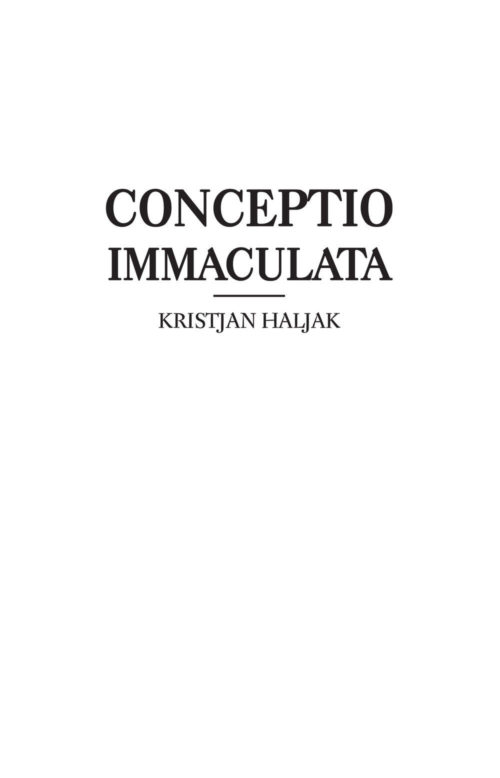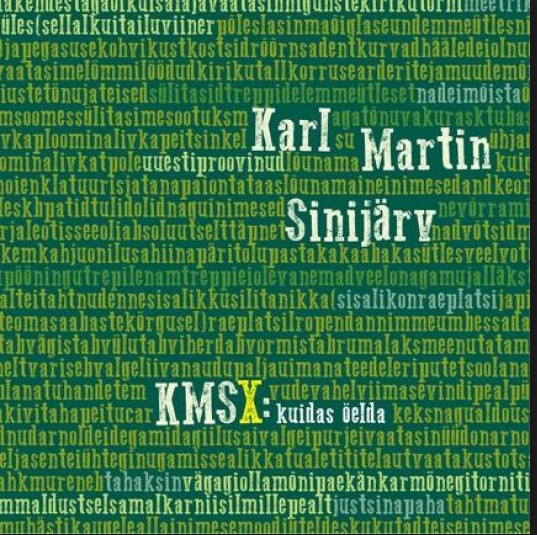Kristjan Haljak. Conceptio Immaculata.
Tallinn, Vihmakass ja Kakerdaja, 2017. 65 pp
ISBN 9789949811212
Kristjan Haljak is the only credible decadent of Estonian literature. His poetry isn’t derived from the usual angst of youth, but spreads its roots in the rich soil of 19th-century French poetic tradition. Having translated both Lautreamont and Baudelaire, Haljak possesses a deep-reaching intellectual capacity.
We don’t need to know the identity of the poetic I’s yearned-for “Maria” (we are told that she likes anise candies). But we’re told something about Haljak himself: “KRISTJAN haljak / was born here / and here / died there / and there / amid land / and sky / land / moon / and sun / to warm sheets yellow / hay in white light’s furrow / this side of evil / that of good.” (p 13). Haljak’s primary means of enchantment is his style: it turns fluid even in his restless live performances, done in perpetual motion. His character is like a soft machine-gunner who overwhelms us with a doleful, but also orgasmic current: “Lately your walls are / differently tempting walls / death cloths a flowing coffin I don’t / like feminine men you know / moreover that reek of smoke and unshaven / beard this time the walls are much more / monkeyish aren’t they // an eight-legged stool / stockings’ rainbow on a drying / rack African free jazz / the imperialist’s hangover ahh / fired ah women / don’t like to the colony / peter to the colony christian / flowing walls that coffin contains / openness and windows floor to ceiling // a clean briefcase perfume tie and / cyanide two white shirts” (p 4).
Haljak is able to channel a stream of thoughts and senses, in which images that initially seem to mesh spill out from one another: the destruction of sentences and twisting of grammar is unavoidable. He gives a new name and form to device sequence and associative poetry. We can, of course, also label it the foggy whims of a romantic decadent: always the poet; French, naturally French! It’s far from pickles and bland sauce, and many readers enjoy this type of attitude: so far from the common, so wandering and free, so crazy-and-beautiful. It’s in this feverish state that one discerns Haljak’s status as a visionary poet, as a kind of William Blake: “I sneezed and saw that / Satan was walking on Wismari Street / wearing a peasant shirt a garland / of yellow blossoms upon his head / I sneezed and saw Satan / walking and carrying a cross / I sneezed and I saw that / — / (p 23).
Haljak’s poems appear (and exactly that, they appear, for who am I to truly see into a poet?) to arise out of his wanderings, chance encounters, and images found on the street, in cafés, and in other people. Out of impressions. He occasionally contradicts this by telling a realist story or describing an everyday scene, but also fetters us with its charm. Haljak makes images flow using his “prose chopped into poetry” effect. Even so, despite his howling imagery, he is a realist, one of us. He is a soul gripped by life itself, and one that records it.
Ah, right: we do find something out about Maria. In the last poem of the collection, it turns out that she is apparently immortal. This is a comfort for us scoundrels, for us poets, who need to admire and long for a woman as if she is a redeemer. Or else, simply as if she is a muse. Or a medusa.
Jürgen Rooste (1979) is a poet, journalist, and one of the most renowned Estonian writers of his generation. He has published fifteen poetry collections and received the Cultural Endowment of Estonia’s Award for Poetry on two occasions, among many other literary awards.





